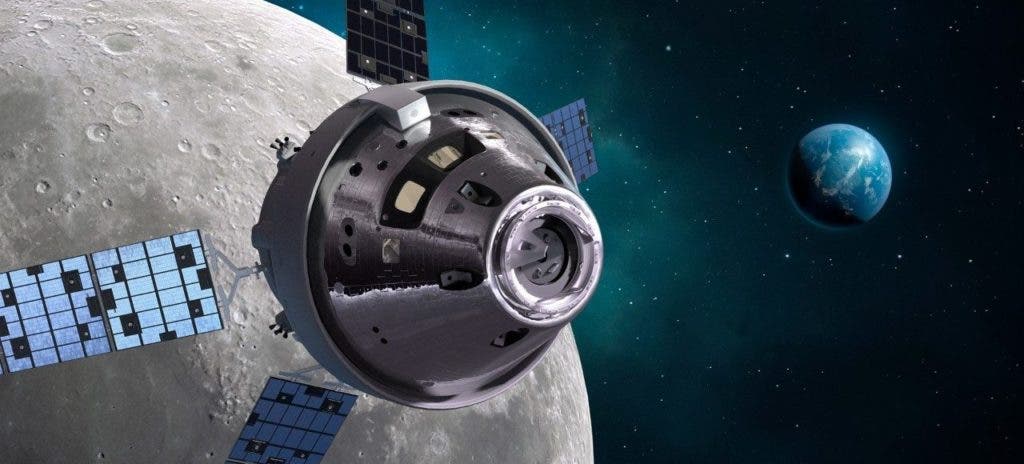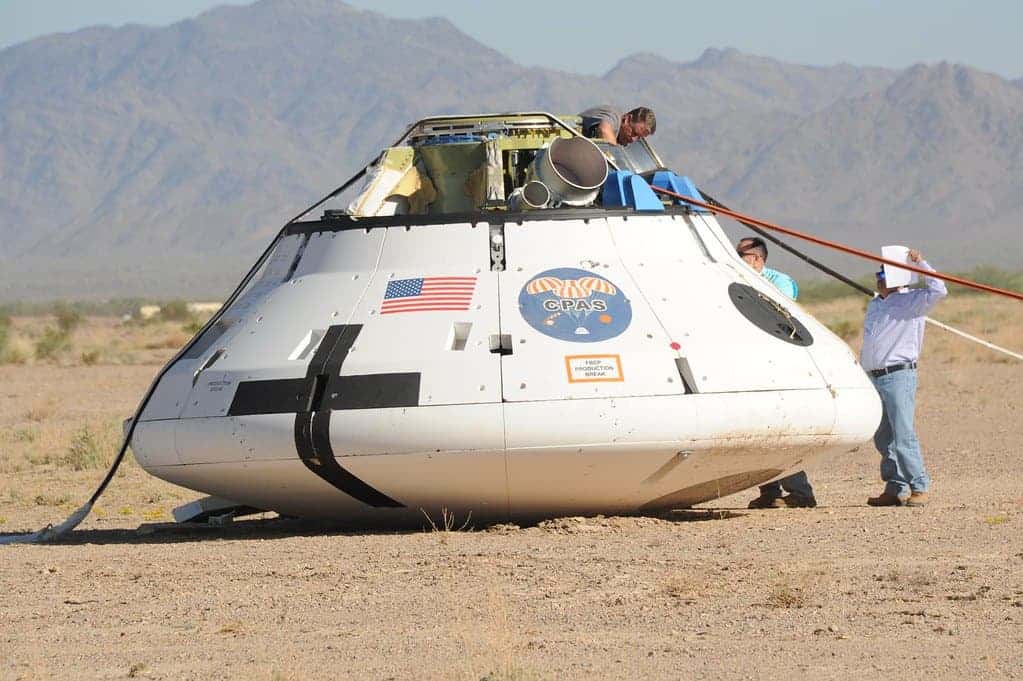July 20 marked not only the 50th anniversary of the first manned moon landing, but also the beginning of the next chapter of exploration. In the Neil Armstrong Operations and Checkout Building at NASA’s Kennedy Space Center, Vice-President Mike Pence announced that the Orion capsule is ready for the first Artemis lunar mission.
Built by Lockheed Martin, Orion will fly on the uncrewed Artemis 1 test mission around the moon next summer. Tying itself to the original moon program, the mission is named for the twin sister of Apollo in Greek mythology. The capsule will be lifted into orbit by the many-times-delayed Space Launch System (SLS) heavy-lift rocket, whose postponements caused the original Artemis date of 2020 to be pushed back to 2021.
During Artemis 1, the SLS will send the uncrewed spacecraft – consisting of the crew and service modules – thousands of miles past the Moon for the first in a series of increasingly complex missions. In 2023, Artemis 2 will then carry astronauts on board, followed by Artemis 3 — scheduled for 2024 — which will be the first craft to land humans on the moon since Apollo 17.
“Similar to the 1960s, we too have an opportunity to take a giant leap forward for all of humanity,” said NASA Administrator Jim Bridenstine.
The European Service Module will provide the power and propulsion for Orion during the mission, is also complete. The European Space Agency‘s module was manufactured by Airbus in Bremen, Germany, and shipped to Kennedy in last November for final assembly and integration.

NASA and Lockheed Martin are preparing for the first crewed test flight of the Orion spacecraft. Image Credit: Lockheed Martin.
Since the crew module pressure vessel arrived in Florida, engineers have been busy installing the capsule’s avionic computers, harnesses, propulsion system and its 12 engines, 11 parachutes, its 16-foot-diameter heat shield, forward bay cover and numerous other systems and components. When the two modules are joined, a heatshield backshell panel on the spacecraft will be installed to prepare it for a September flight inside ESA’s Super Guppy aircraft to NASA’s Plum Brook Station in Sandusky, Ohio. Testing there will ensure the joined modules can withstand the deep space environment and a successful trip to Mars.
“Orion is a new class of spaceship, uniquely designed for long-duration deep space flight, that will return astronauts to the Moon and eventually take the first humans to Mars, and bring them all back safely.” said Lisa Callahan, vice president and general manager of Commercial Civil Space at Lockheed Martin. “Orion will accelerate scientific discovery of our solar system and will be the cornerstone of the defining space achievement of this era.”
Once Orion returns to Kennedy at the end of the year, the spacecraft will go through final preparations before Lockheed Martin delivers it to ground systems for launch processing in early 2020.










